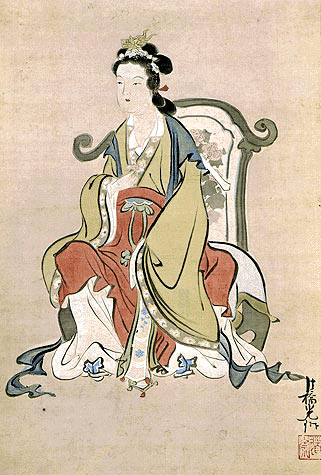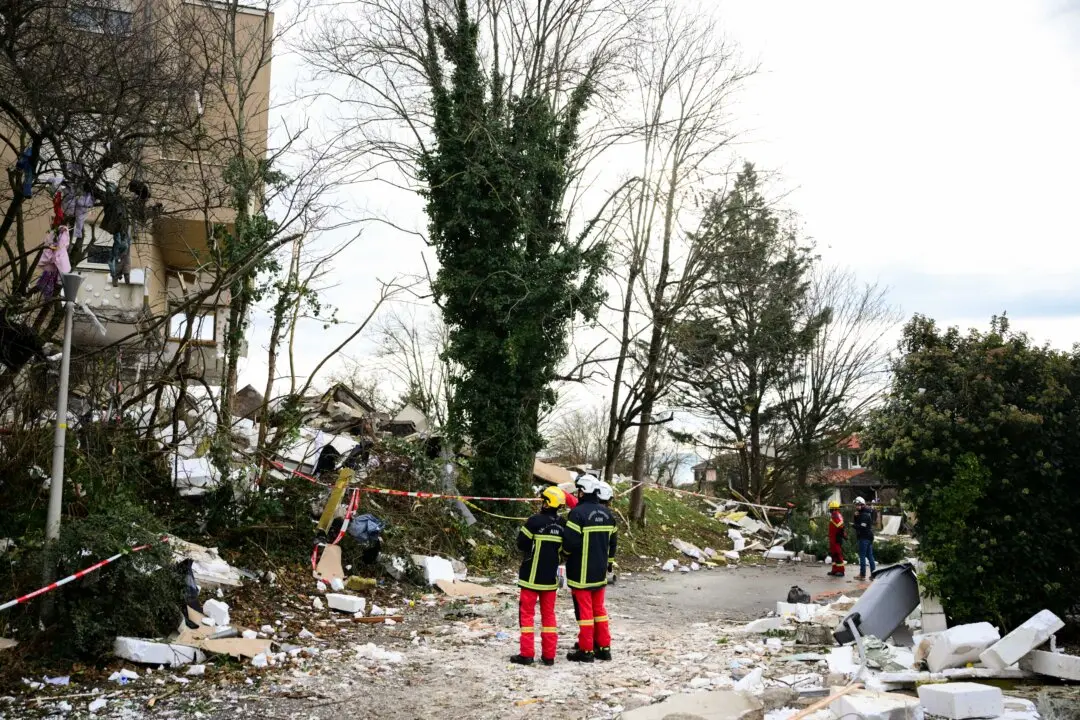This is the sixth in a series of articles by Epoch Times staff describing the foundations of Chinese civilization and setting forth the traditional Chinese worldview. The series surveys the course of Chinese history, showing how key figures aided in the creation of China’s divinely inspired culture. This installment introduces Yu the Great, the hero who subdued the Great Flood
As the Great Flood raged and Emperor Yao prepared his heir Shun for the throne, a third personality emerged: Yu the Great.
Illustrious names and titles are common among Chinese rulers, but Yu is one of the few called “the Great.” To earn this honorable distinction, not only did he quell the devastating floods afflicting the country at the time, but he also established China’s first hereditary dynasty, the Xia.
Yu’s father, Gun (pronounced “gwuhn”), was an artisan skilled in the construction of walls. Emperor Yao placed him in charge of the effort to control the flooding, but they did not get along. Gun was controlling, insubordinate, and stubborn.
Gun set up many dikes, but these proved to be ineffective. People perished en masse as water levels rose and broke the levees time and again.
It is said in the “Classic of Mountains and Seas” that Gun stole the xi rang, a magical expanding soil, from the Celestial Emperor. He intended to use the xi rang as the ultimate dam, but instead incurred the wrath of the divine monarch. In his rage, the Celestial Emperor destroyed Gun’s work and sent even greater torrents. For this failure, Shun, Emperor Yao’s heir, exiled Gun to Mount Yu.
There, Gun encountered and battled the fire god Zhu Rong, who had been dispatched to execute him. Gun perished after he threw himself into the waves. The “Classic of Mountains and Seas” states that his body did not decay for three years, and upon autopsy in the state of Wu, transformed into a yellow dragon.
Despite his father Gun’s performance, Yu, known during his life as Wen Ming, gained the favor of Shun, who would recommend him to the emperor to combat the flood.
A Divine Mission
According to legend, Gun and Yu were descendants of The Yellow Emperor. Yu learned much from his father, who went to control the flood when Yu was 10 years old.
Decades earlier, the Lady Queen Mother of the West had told Emperor Yao about the coming floods and how they had been arranged by gods. She said that in time, heaven would dispatch a chosen man to turn back the tide.
In his youth, Yu came across an old hermit, who told him that purging the disaster would be a superhuman task possible only with divine assistance. The hermit instructed him in the principles of topography and how to work with, rather than against, the characteristics of the water element.
After his mother’s death, a second teacher imparted to Yu the principles of morality and virtue. He then went to join his father at work.
Yu’s methods differed from those of Gun. Observing his father’s work, Yu saw that dikes could not redirect the flow of water. The mountains themselves would have to be split open and canals dug in order to guide the torrents to the sea.
During his travels, Yu met several mountain gods who assisted him in his surveys. The “Spring and Autumn Annals of Wu and Yue” records that Yu discovered red and green jade tablets and 12 books that detailed not just the surface terrain and natural routes of China, but even revealed its underground geography.
Madam Yun Hua, daughter of the Lady Queen Mother, summoned Yu and bestowed upon him two scriptures. She informed him that these would be effective in calling for assistance from the deities of heaven and earth, and could drive away wild beasts. And for good measure, Yun Hua also dispatched seven heavenly generals to provide support to Yu.
Emperor Yao was pleased to hear of the miracles that Yu had witnessed in his tours of the country. He was convinced that the premonition that the Lady Queen Mother had imparted to him was coming true.
Yao sent for his legal minister Gao Yao, who commanded the entire people to follow Yu’s orders or face the authorities. Tens of thousands of Yao’s subjects were mobilized, and all government officials were placed under Yu’s authority.
Yu designated six phases for the colossal effort, which would take 10 years to roll back the Great Flood. Additionally, several more years were needed to construct the irrigation systems and reservoirs he planned for the people of the future.
Taming the Yellow River
Starting from the state of Ji—today’s Shanxi and Henan provinces—Yu set his sights on the raging Yellow River. As his workers and their overseers set out to accomplish this task, two sea monsters from the eastern sea arrived to interfere with the labor. Yu summoned Yu Guo, god of the eastern sea, to subdue the intruders.
After great efforts, and with the help of the god, Yu and his men were able to drain water from Ji State and force it eastwards to the ocean via the Yellow River.
Meanwhile, the seven heavenly generals, dispatched by Madam Yun Hua and commanded by Wang Jun, defeated seven unruly immortals who were harming the people amidst the chaos of the flood. After this victory, the generals then joined Yu’s efforts to control the flood.
At Mount Wangwu, Wang Jun showed Yu a book stored in a naturally occurring stone box in a cave. He who could follow the path of cultivation prescribed in the volume, Wang Jun explained, would be able to ascend in level and become a god.
Splitting Open Dragon Gate
Mount Longmen, or Dragon Gate Mountain, was a key chokepoint along the Yellow River where the floodwaters had pooled. Though water was clogged behind Mount Luliang, Yu found a small opening that he could exploit.
In the “Commentary on the Water Classic,” it is written that Yu widened the gap in the mountain until it was split open. Mount Longmen was handled in a similar fashion, and the water that had been forced upstream now flowed in the proper direction.
The pass was then renamed Yumen, or the Gate of Yu.
A popular saying about Longmen concerns the nearby Carp Ravine. It is said that if the carp can make it to the upper reaches of Longmen and jump over the pass, they can transform into dragons.
Yu’s work in the Yellow River region successfully diverted the excess water back to the ocean. The passes and ravines he created turned the river basin from a natural disaster zone to an irrigated cradle of civilization.
Read the next installment here.








